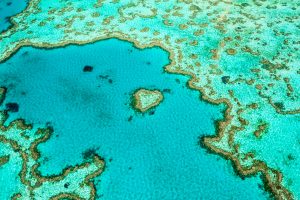The Australian government on Tuesday welcomed a draft UNESCO decision to a lift a threat of downgrading the Great Barrier Reef to an endangered World Heritage site.
The U.N. cultural agency and the International Union for Conservation of Nature recommended in November of last year that the world’s largest coral reef system be added to the List of World Heritage in Danger due to threats including rising ocean temperatures.
But UNESCO issued an updated a report in Paris on Monday that said it would be appropriate to re-evaluate whether the famed tourist attraction off Australia’s northeast coast fitted the World Heritage in-danger criteria.
The report recommended Australia submit a progress report to the World Heritage Committee by February on its commitments to make environmental improvements.
The World Heritage Committee will consider the draft recommendation in September.
Prime Minister Anthony Albanese took the draft UNESCO decision as a vote of confidence in his center-left Labor Party government that was elected last year.
“This confirms my government is working hard to protect the reef, is acting on climate change and that the rest of the world has taken notice,” Albanese told reporters.
Albanese’s government and the previous conservative government had lobbied against UNESCO downgrading the World Heritage status given to the reef in 1981. There are fears that a World Heritage in-danger listing would damage a tourism industry that revolves around the reef and employs more than 64,000 people.
The Labor government was elected in May last year, two months after a 10-day U.N. fact-finding mission that visited the reef. The new government argued that UNESCO’s criticisms of government inaction were outdated.
Albanese’s government has committed Australia to reducing its greenhouse gas emissions by 43 percent below the 2005 level by 2030. The previous government only committed to a reduction of 26 percent to 28 percent by the end of the decade.
Marine ecologist Lissa Schindler said the UNESCO report found that Australia needed to do more to address climate change and water quality threats to the reef, including more ambitious greenhouse gas emission reduction targets.
“I think that they’ve started off and done a really good job and there’s more to do,” Schindler told Australian Broadcasting Corp. of the government’s performance.
Global warming is the greatest threat to coral reefs around the world. Heat stress causes coral to bleach and bleaching events on the Great Barrier Reef in 2016, 2017 and 2020 damaged two-thirds of its coral.
The latest UNESCO report noted data submitted by Australia in September last year showed the highest level of hard coral cover in the northern and central regions of the reef since monitoring began 36 years ago.
It also noted the government had canceled the previous government’s plans to build two major dams in Queensland state that would have affected the reef’s water quality.
In February, Australia for the first time rejected a coal mining application based on environmental law, with the new government citing the open-pit mine’s potential harm to the nearby Great Barrier Reef.
In July 2021, the previous government garnered enough international support to defer an attempt by UNESCO to list the reef as in-danger.
The Great Barrier Reef accounts for around 10 percent of the world’s coral reef ecosystems. The network of more than 2,500 reefs covers 348,000 square kilometers (134,000 square miles).

































